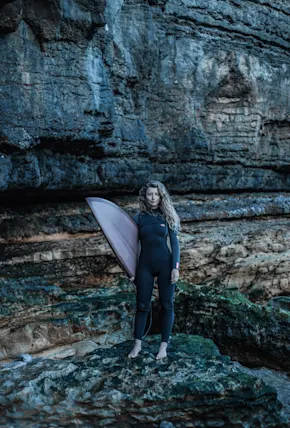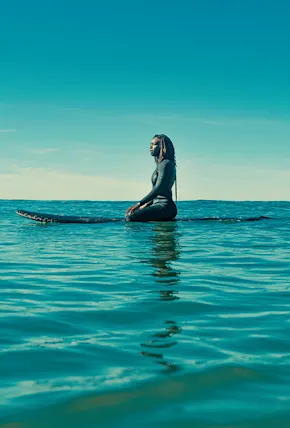The first documented wardrobe malfunction in surfing can be credited to none other than best-selling novelist Agatha Christie. Writing from her stint exploring one the British Empire’s colonies in the 1920s, the queen of mystery wrote: “The second time I took the water, a catastrophe occurred. My handsome silk bathing dress, covering me from shoulder to ankle was more or less torn from me by the force of the waves. Almost nude, I made for my beach wrap.”
Unreliable swimwear is something every female surfer can relate to. Since the advent of the bikini (the now-ubiquitous design created in 1946, by a man, and named for the nuclear testing site Bikini Atoll), not only are female surfers expected to be proficient in the water, but sexy, too—an absurdity surfer Lauren Hill poked fun at in her short film “Pear Shaped.”











